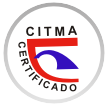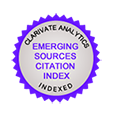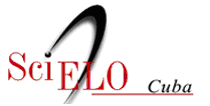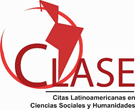Editorial
Abstract
The publishing and graphic communication industry is characterized by the provision of publishing and printing services for third parties as its main activity. This industry, like all others, faces the challenge of achieving sustainability by incorporating the concepts of sustainability into all its processes to address the impacts generated on the environment through eco-innovation and the circular economy.
Eco-innovation is constantly working on ideas related to new sustainable technologies (involving economic, environmental, and social improvements) to take advantage of all available resources without damaging the environment. It is a process that involves the collaborative work of all actors and whose result is the commercialization of a product with improved performance characteristics to objectively provide new and improved services to the consumer.
Eco-innovation helps companies be more competitive, creates value for customers, and identifies new opportunities. These must be flexible and adaptable, understand the customer and its needs, make proposals with more value every day, understand the environment, and be aware of market changes. Innovation can be of different types: product innovation, service innovation, process innovation, business model innovation, technological innovation, logistics innovation, marketing innovation, and organizational innovation.
Although there are several definitions of circular economy, the appropriate one for the publishing and graphic communication industry is: “Circular economy is a production and consumption model that involves sharing, leasing, reusing, repairing, rehabilitating and recycling materials and existing products as long as possible. Thus, the life cycle of the products was extended. The important thing is to apply it according to the conditioning factors of the type of industry being studied: bear in mind that it is a concept under development, it is multidimensional, dialectical, systemic, and complex, has different scales, deals with the entire life cycle of the product or service, and requires gradualness in its application. Among the main aspects required to achieve the objectives of both tools are as follows:
Resource management
Training and education
Ecodesign
Digitalization
Life extension
Environmental impact
Business cooperation
Waste management
Circular strategies and regulations
Both eco-innovation and circular economy have the same purposes: to introduce new knowledge and tools that lead to a change of paradigms and a culture to achieve sustainable development and solve the emerging problems of today's world.
It must be kept in mind that cultural changes do not happen quickly enough, because they require the formation of a willingness to change, the allocation of resources and the acquisition of new knowledge, which must be assimilated until they become daily work tools to achieve the expected results.
To achieve the introduction of these concepts, it is necessary the express and demonstrated will of the administrations, clear definition of what is and what is not understood by circular economy and eco-innovation, reliable data to make good diagnoses, capacity to identify opportunities and analyze environmental, social, technical, and economic viability, existence of instruments and methodologies, and level of management culture.
Therefore, our scientific editorials face a double challenge in this regard.
- To set the example of applying these principles in publishing and graphic companies, for which models, tools, methodology, and indicators are required for this type of company, which is not very common.
- To disseminate examples of successful application of the circular economy in different territories, communities, production, and service companies to achieve a true science of sustainability and successful governance based on science, innovation, and sustainability.
As usual, it is left to debate the criteria presented here to hear opinions on the subject and find how to promote cooperation to achieve increase in scientific and editorial journals this dual role that has been exposed here.
Downloads
Published
How to Cite
Issue
Section
License
Copyright (c) 2024 Editorial "Universo Sur"

This work is licensed under a Creative Commons Attribution-NonCommercial-NoDerivatives 4.0 International License.
La editorial "Universo Sur", de la Universidad de Cienfuegos, publica el contenido de la Revista "Universidad y Sociedad" bajo una Licencia Creative Commons Atribución-NoComercial-SinDerivar 4.0 Internacional.
© Podrá reproducirse, de forma parcial o total, el contenido de esta publicación, siempre que se haga de forma literal y se mencione la fuente.










